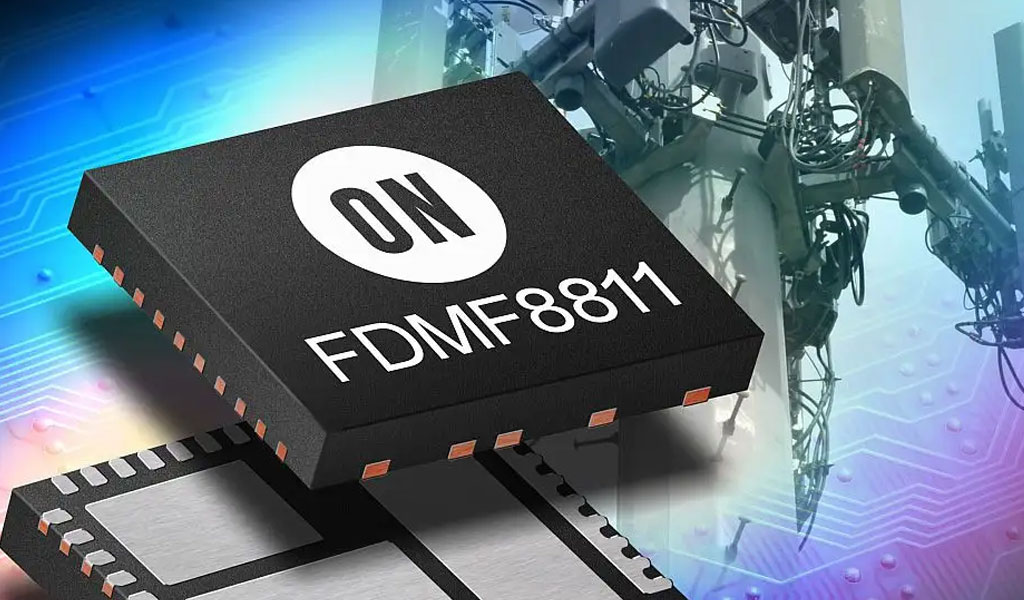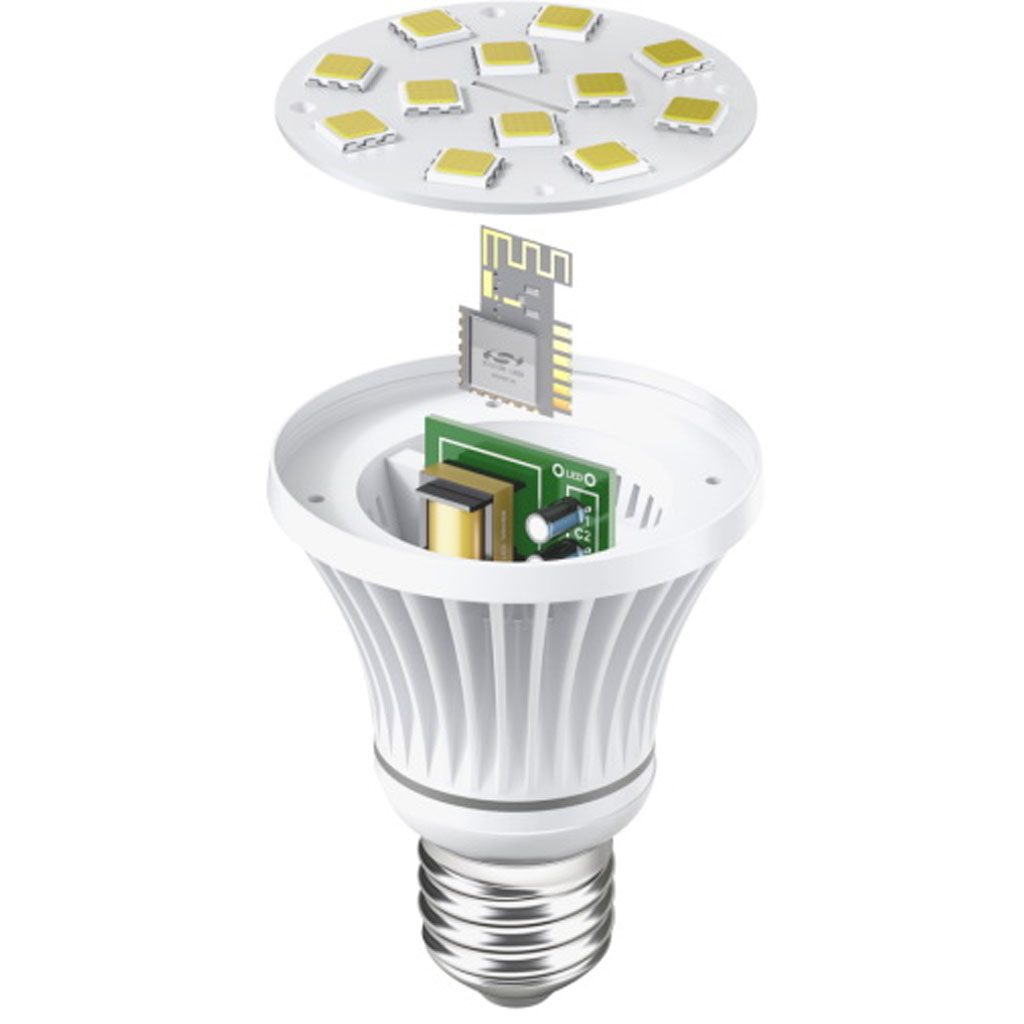
Light-emitting diode (LED) light bulbs are the biggest advancement in lighting since the first commercial incandescent light bulbs were introduced 140 years ago. The benefits of LED lights are numerous and well documented. Compared to modern incandescent bulbs, they typically use 75% less energy and can last more than 50 times longer. Today’s LED bulbs are a huge improvement over the LED bulbs of yesteryear. They generate minimal heat, emit no UV or IR, contain no mercury, are shock resistant, and operate effectively in extreme environments.
The next wave of the lighting revolution is coming: smart connected lighting. Adding wireless connectivity and networking capabilities to LED bulbs provides more opportunities than just simple on/off functionality. You can adjust brightness, color temperature and timing through a simple smartphone app or voice assistant, and even remotely control lights on the go. Applications that were previously unheard of include wireless proximity sensor-triggered smart lights that automatically illuminate hallways and rooms at night as you walk through a house or building, bedside lighting that gradually wakes you up in the morning, or hospital lighting that uses color to improve mood, health, and speed recovery. The convenience and benefits of smart connected lighting are limitless.
Smart lighting is still in its infancy compared to traditional lighting, but adoption is steadily increasing across residential, commercial and industrial markets, in part due to the adoption of green energy incentives and regulations such as California Title 20. According to research and market forecasts, the global smart lighting market will reach $24 billion by 2022, with a compound annual growth rate (CAGR) of up to 21% from 2018 to 2023.
The acceptance and demand for smart connected lighting will continue to grow as more “things” are connected to each other and consumers embrace smart home technology. That’s why Acuity Brands, Cree, Eaton, GE Lighting, Philips/Signify, Osram and many other top lighting brands are racing to offer not only smart LED products, but complete lighting ecosystems that are easy to deploy, interoperable, secure and scalable s reason.
Smart LED Design Challenges
Achieving wireless connectivity in LED light bulbs in a cost-effective manner presents a new set of design and implementation challenges for lighting OEMs. For example, smart LED light bulbs must meet stringent RF regulatory requirements, stringent energy efficiency standards, high temperature ratings, and stringent product size and space constraints. Lighting developers must also consider device and network security and ensure that smart LED bulbs are as resistant to malicious hackers as any other connected IoT product.
Another key design consideration is the choice of wireless protocol. Many connectable lights operate on the 2.4 GHz band and use one of several popular standards-based short-range wireless protocols such as Zigbee, Bluetooth Low Energy, Bluetooth Mesh or Wi-Fi. Using standards-based protocols facilitates interworking with common consumer products such as voice assistants, smartphones, and tablets without the need for additional custom gateways and network infrastructure products. Certain smart LED designs may require multi-protocol connectivity, such as support for Bluetooth Low Energy for device setup and control and the ability to access a Zigbee-based multi-node lighting mesh network through a gateway.
Proprietary wireless protocols other than standards like Bluetooth or Zigbee are also an option. While implementing a proprietary wireless protocol may be easy and cost-effective in the short term, this option may present long-term challenges of interoperability and scalability. Standards-based wireless solutions drive high-volume production, so may be a more cost-effective option in the long run. Choosing the right wireless technology and vendor from the many options available requires a deeper understanding of RF design and performance trade-offs and risks.
Smart LED designs must also meet wireless standards and regulatory performance requirements, such as electromagnetic (EM) radiation and energy consumption, not required by traditional lighting products.

Implementation Challenges
To bring new smart LED products to market, lighting OEMs also face several implementation challenges involving engineering and operational resources:
- To develop expertise and allocate resources to implement and successfully complete certification testing for standards and regulations, such as FCC and CE certification.
- To consider settings that ensure product functionality and security upgrades after the product is deployed in the field, typically via over-the-air (OTA) updates.
- Manage procurement of materials and inventory of multiple components.
- Validate interoperability with other wireless IoT products and ecosystems in the smart home or smart building.
- Optimize bill of materials (BOM) and development costs to deliver cost-competitive products while meeting stringent production schedules and reducing time-to-market.
Eliminate Design And Implementation Challenges With Modular Solutions
While adding wireless connectivity to LED light bulbs can be a daunting task for developers with less RF experience and expertise, pre-certified wireless module solutions are now available to simplify the task of designing smart LED products , thereby minimizing the many challenges facing lighting OEMs.
The wireless module is designed to provide a comprehensive plug-and-play solution that integrates the key components developers need to complete the connected portion of their LED design. Module suppliers have done the tough RF-centric tasks of antenna design, impedance matching, tuning and integration of passive components, and protocol development. For OEMs who may lack the necessary RF or protocol expertise, these completed engineering and integration efforts can be of great benefit. In addition, wireless modules usually come with all the necessary software, including the chosen protocol stack. Module suppliers also provide easy-to-use development tools to support and simplify the design and debugging process.
By using wireless modules in LED designs, lighting OEMs don’t need to worry about managing the procurement and inventory of multiple RF components such as antennas, crystal oscillators, and passives. Additionally, the same module can be used for multiple lighting products, further simplifying purchasing and inventory management.
Choose The Right Module Solution
When evaluating module options for LED designs, lighting OEMs should look for solutions designed specifically for the specific needs of connected lighting applications.
For example, Silicon Labs’ MGM210L and BGM210L modules are the first application-optimized module products available for the lighting market. The MGM210L module supports Zigbee and Thread, as well as dynamic multi-protocol connections such as Zigbee and Bluetooth Low Energy. The BGM210L is designed for use with Bluetooth Low Energy or Bluetooth Mesh. The two new modules are designed to simplify and accelerate the development of feature-rich, color-selectable and dimmable LED lights, while enabling developers to take advantage of a Bluetooth, Zigbee and Thread-based mesh networking ecosystem.
The xGM210L module is based on the Silicon Labs Series 2 EFR32xG21 wireless system-on-chip (SoC) chip with peripherals optimized for lighting applications. The SoC includes a low-power Arm® Cortex®-M33 processor core, enough memory to support dynamic multi-protocol operation and OTA firmware updates to ensure future adaptability of smart lighting products, and support for 802.15.4, Bluetooth Mesh protocols and Bluetooth Low Energy’s high performance 2.4 GHz RF transceiver. Radios handle wireless network functions through single-protocol or multi-protocol connections. The integrated RF power amplifier also enables the xGM210L module to handle long-range applications requiring hundreds of meters of line-of-sight connectivity.
Energy-efficient modules such as the xGM210L device offer lower active power consumption levels that are optimized to meet California Title 20 equipment efficiency regulations. Many lighting products shipped to the U.S. market must comply with California Title 20 regulations, which require certification of manufacturers of lighting control equipment.
Modular solutions can help lighting OEMs reduce the R&D cycle associated with RF design, protocol optimization and regulatory certification. The xGM210L module is pre-certified for use in North America (FCC and ISED), Europe (CE), Korea and Japan and is designed to minimize the time, cost and risk factors associated with global wireless certification, enabling lighting OEMs Reduce time-to-market by months.
As manufacturers add RF connectivity to more LED products, small form factor bulb designs introduce complex size, power and thermal constraints that cannot be easily addressed with existing wireless solutions. The xGM210L module is designed to address these limitations. The module’s custom printed circuit board (PCB) dimensions (16 mm x 23 mm) match the compact dimensions of most LED bulb housings. It also has a temperature rating of up to +125°C to ensure reliable operation in the bulb housing (which can get hot after prolonged use).
Security is another important consideration for smart LED products. Recent media reports of hackers breaking into smart home networks via LED light bulbs have made consumers and lighting developers aware of the urgent need for security from the light bulb itself to the cloud. Lighting OEMs should look for modules that offer built-in hardware security features that enable developers to implement robust security in smart LED products without adding cost.
For example, the xGM210L module features a dedicated security core that isolates the application processor and provides fast, power-efficient cryptographic operations and differential power analysis (DPA) countermeasures. A NIST and AIS-31 compliant True Random Number Generator (TRNG) enhances device encryption. Secure Boot with Root of Trust and Secure Loader (RTSL) technology helps prevent malware intrusion and rollbacks, ensuring reliable firmware execution and OTA updates. A secure debug interface with unique lock/unlock functionality allows authenticated access for enhanced failure analysis. The module’s Arm Cortex-M33 core integrates TrustZone technology to achieve system-level hardware isolation for trusted software architectures.
A complete modular solution should come with a robust wireless software stack, giving developers a choice of standard protocols such as Zigbee, Thread, Bluetooth Mesh, and Bluetooth Low Energy. In addition, developers should expect comprehensive software support, including a robust software development kit (SDK) and advanced tools to help verify network performance and aid debugging, optimizing the performance and energy consumption of smart lighting applications. The xGM210L module comes with a powerful suite of development tools, such as Network Analyzer, Energy Profiler, and more. The SDK contains all the libraries needed to implement low-energy operation and all the drivers needed to make the lightbulb communicate with the network.
There is no doubt that smart LED light bulb products are gaining popularity in residential, commercial and industrial markets. Comprehensive hardware and software solutions are now available to simplify the development of connected lighting products. Optimized wireless modules are available now that help reduce time to market, reduce development and certification costs, and address many of the wireless design challenges OEMs may face.






